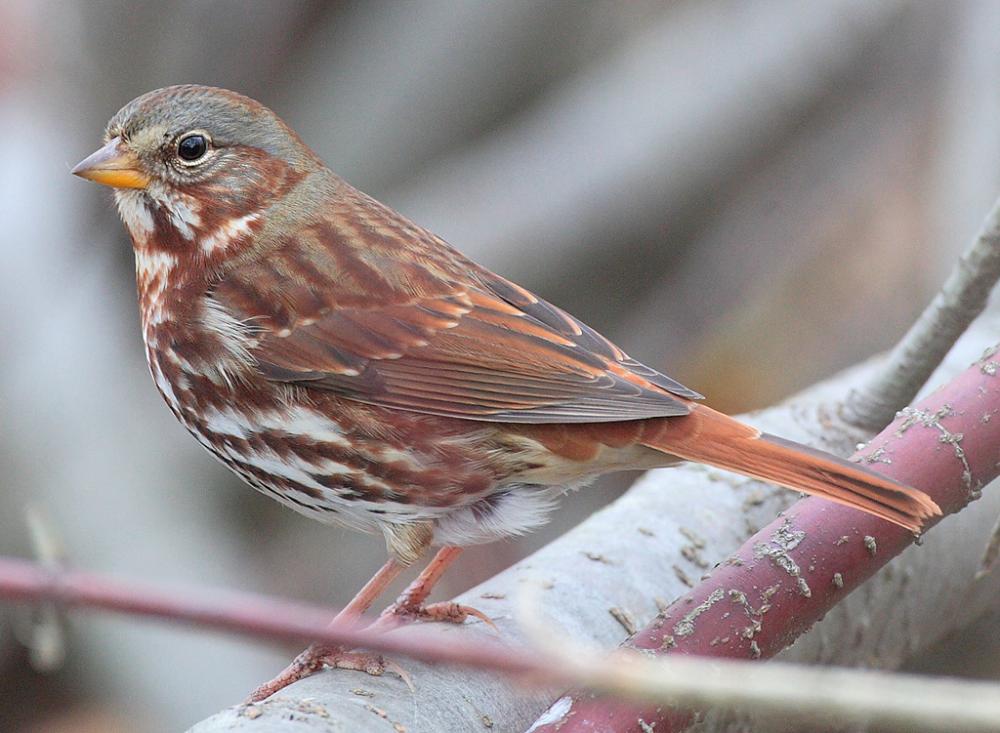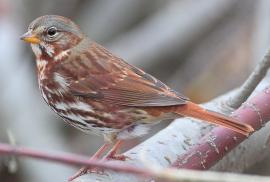Guide to Boreal Birds
Overview
Away from the breeding grounds, Fox Sparrows are most conspicuous during spring migration, when one frequently hears their rich, melodious song coming from brushy thickets and roadsides. They scratch in leaves for insects and seeds and often make so much noise that one expects to find a larger animal. Western birds tend to be more dusky brown or slate-colored, and they bear little resemblance to the "fox-colored" eastern birds.
Description
6-7 1/2" (15-19 cm). A chubby, large sparrow, either dusky brown, or slate-colored in the West, or rich rufous in the East, often so dark that no back pattern can be discerned. Heavy streaking of underparts converges at midbreast into a large brown spot. Heavy bill with lighter-colored lower mandible, slightly notched rust-colored tail, and rounded head outline. Heavier than a House Sparrow.
Voice
A lively song that opens with 1 or more clear whistles followed by several short trills or churrs. Call a sharp chink.
Nesting
4 or 5 pale green eggs, densely spotted with red-brown, in a thick-walled cup of leaves in grass and moss, concealed in vegetation on or near the ground.
Habitat
Thickets and edges of coniferous, mixed, or second-growth forests or chaparral. In winter, particularly in the East, weedy pastures and brushy roadsides.
Range/Migration
Breeds from Aleutians and mainland Alaska east to northern Quebec and Maritimes and south to southern California and Colorado. Winters south from British Columbia and across southern United States, and locally farther north.



